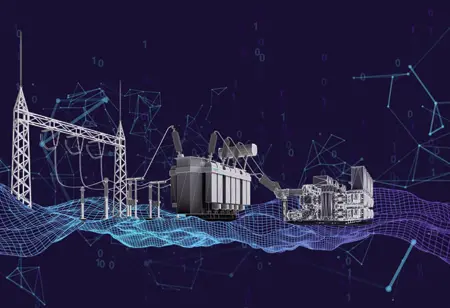Thank you for Subscribing to Electrical Business Review Weekly Brief
I agree We use cookies on this website to enhance your user experience. By clicking any link on this page you are giving your consent for us to set cookies. More info
The Transformation of Aviation with Electric Propulsion
The potential of electric propulsion to revolutionize the aviation industry by addressing environmental concerns and driving technological innovation. However, overcoming challenges related to battery technology and infrastructure will be crucial for its successful implementation.

By
Electrical Business Review | Monday, January 27, 2025
Stay ahead of the industry with exclusive feature stories on the top companies, expert insights and the latest news delivered straight to your inbox. Subscribe today.
The potential of electric propulsion to revolutionize the aviation industry by addressing environmental concerns and driving technological innovation. However, overcoming challenges related to battery technology and infrastructure will be crucial for its successful implementation.
FREMONT, CA: The integration of electric propulsion systems in aviation is addressing environmental concerns revolutionizing how aircraft operate, and reducing their impact on the planet.
Electric motors are emerging as a viable solution to mitigate the aviation sector's carbon footprint. Electric propulsion systems, powered by batteries or hybrid setups, produce zero direct emissions during flight. This shift from traditional jet engines significantly reduces greenhouse gas emissions and air pollutants, aligning with global efforts to combat climate change and create a more sustainable aviation industry.
Beyond emissions reduction, adopting electric motors in aviation contributes to noise reduction during takeoff, landing, and in-flight operations. Electric aircraft produce significantly less noise than traditional engines, alleviating noise pollution concerns for communities surrounding airports and flight paths. This quieter operation enhances the aviation industry's relationship with local communities and improves the overall flying experience for passengers.
Integrating electric motors also opens doors to innovative aircraft design and engineering. Electric propulsion systems offer greater flexibility in terms of motor placement, leading to novel aircraft configurations and improved aerodynamics. This can result in enhanced fuel efficiency and increased flight range, addressing some limitations of battery technology's current energy density.
However, challenges persist in the electrification of aviation. Battery technology is a critical factor, as the energy density of batteries needs to improve to support longer flights. Additionally, developing charging infrastructure for electric aircraft at airports is essential to enable seamless operations and ensure efficient turnaround times between flights.
In conclusion, integrating electric motors in aviation marks a pivotal juncture in the industry's journey toward sustainability. As the aviation sector embraces electric propulsion systems, it reduces emissions, minimises noise pollution, and drives technological innovation. With ongoing advancements in battery technology and charging infrastructure, electric aircraft are poised to become vital to the aviation industry's commitment to a greener future.








